Magnetic Force on a Current-Carrying Wire
- The motor effect occurs:
When a wire with current flowing through it is placed in a magnetic field and experiences a force
- This effect is a result of two interacting magnetic fields
- One is produced around the wire due to the current flowing through it
- The second is the magnetic field into which the wire is placed, for example, between two magnets
- As a result of the interactions of the two magnetic fields, the wire will experience a force
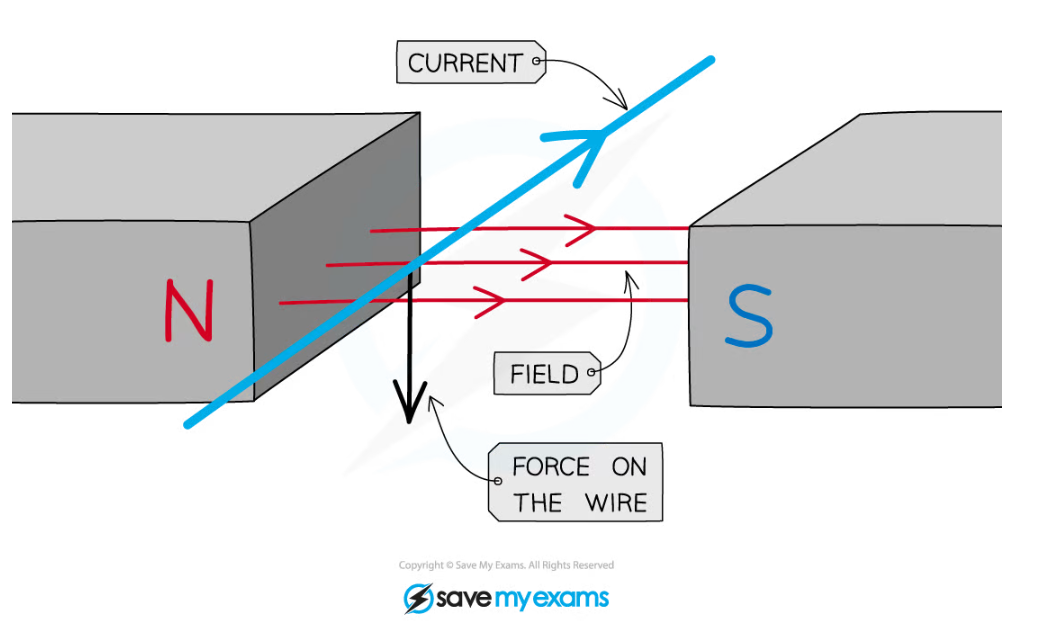
The motor effect is a result of two magnetic fields interacting to produce a force on the wire
Simple Motors
- The motor effect can be used to create a simple d.c electric motor
- The simple d.c. motor consists of a coil of wire (which is free to rotate) positioned in a uniform magnetic field:

A simple d.c. motor consisting of two magnets, a coil and a split ring commutator to control the direction of the current
- When the current is flowing in the coil at 90o to the direction of the magnetic field:
- The current creates a magnetic field around the coil
- The magnetic field produced around the coil interacts with the field produced by the magnets
- This results in a force being exerted on the coil
- The direction of the force can be determined using Fleming's left-hand rule
- As current will flow in opposite directions on each side of the coil, the force produced from the magnetic field will push one side of the coil up and the other side of the coil down
- This will cause the coil to rotate, and it will continue to rotate until it is in the vertical position
- When the coil is in the vertical position there will be a force acting upwards and a force acting downwards
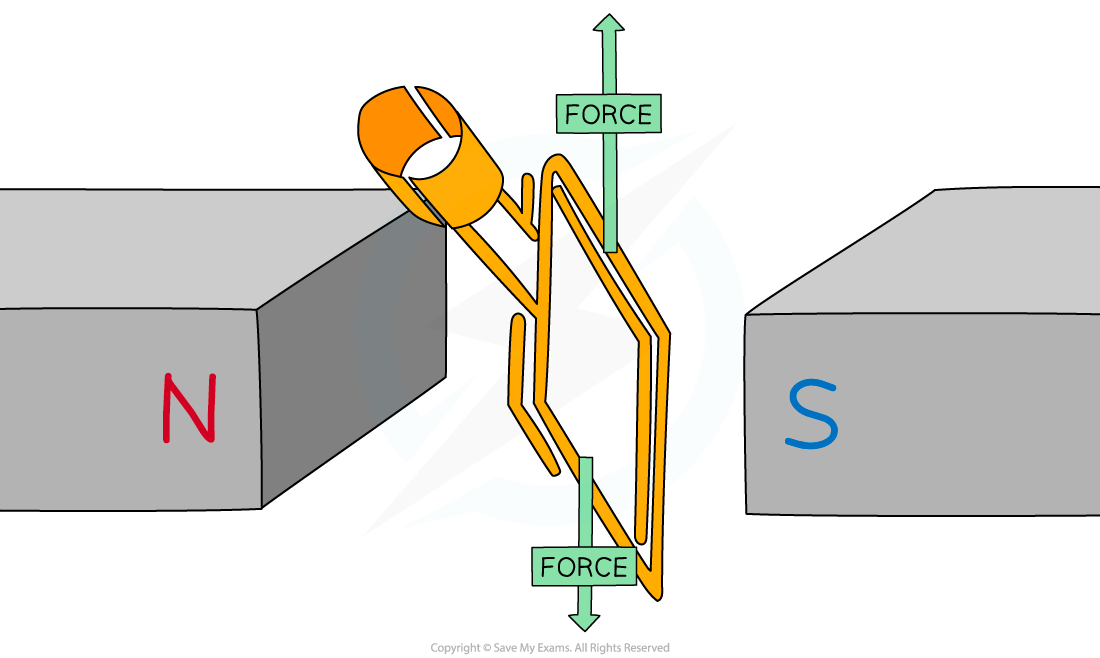
Forces acting on the coil in the vertical position
- The split ring commutator swaps the contacts of the coil
- This reverses the direction in which the current is flowing
- Reversing the direction of the current will also reverse the direction in which the forces are acting
- As a result, the coil will continue to rotate
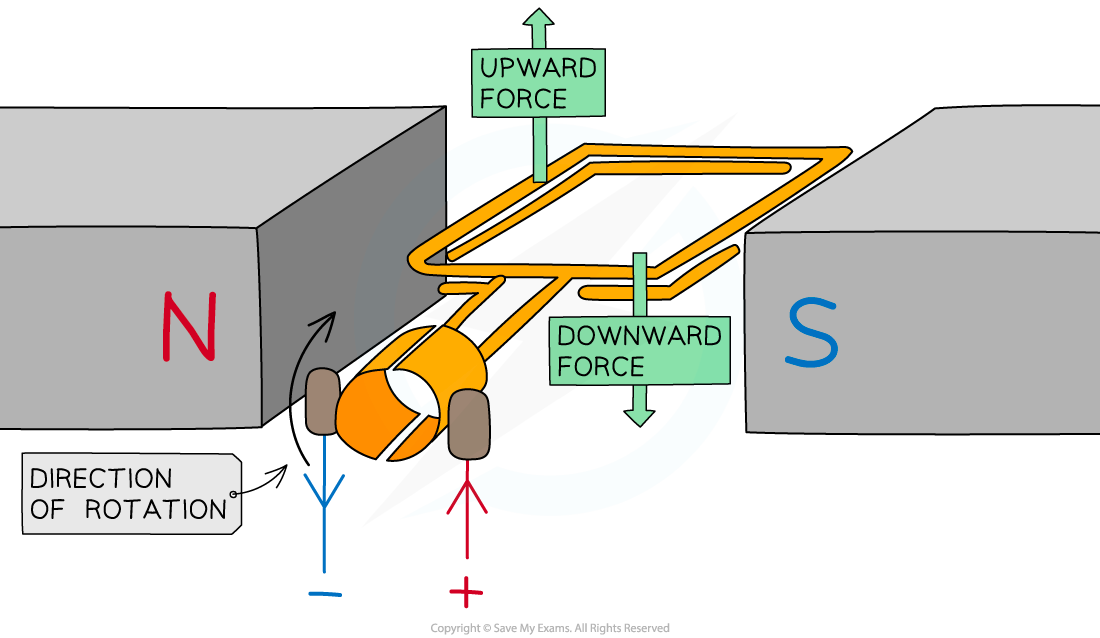
Forces on coil after commutator has reversed the direction of the current
- The commutator reverses the direction of the current in the coil every half turn
- This will keep the coil rotating continuously as long as the current is flowing
Factors Affecting the D.C Motor
- The speed at which the coil rotates can be increased by:
- Increasing the current
- Increasing the strength of the magnetic field
- The direction of rotation of coil in the d.c motor can be changed by:
- Reversing the direction of the current
- Reversing the direction of the magnetic field by reversing the poles of the magnet
- The force supplied by the motor can be increased by:
- Increasing the current in the coil
- Increasing the strength of the magnetic field
- Adding more turns to the coil
Loudspeakers
- Loudspeakers and headphones convert electrical signals into sound
- They work due to the motor effect
- They work in the opposite way to microphones
- A loudspeaker consists of a coil of wire which is wrapped around one pole of a permanent magnet
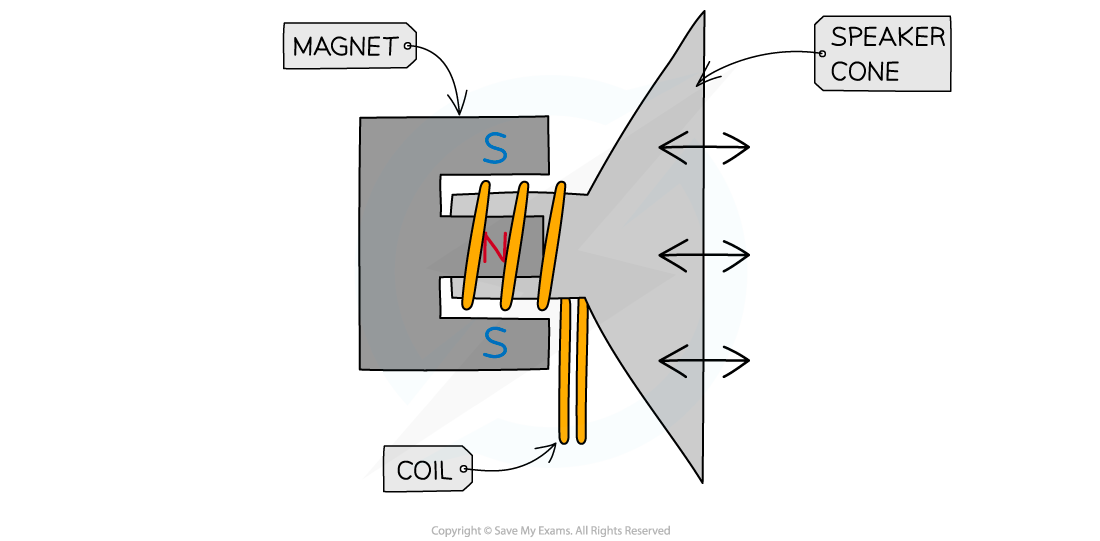
Diagram showing a cross-section of a loudspeaker
- An alternating current passes through the coil of the loudspeaker
- This creates a changing magnetic field around the coil
- As the current is constantly changing direction, the direction of the magnetic field will be constantly changing
- The magnetic field produced around the coil interacts with the field from the permanent magnet
- The interacting magnetic fields will exert a force on the coil
- The direction of the force at any instant can be determined using Fleming’s left-hand rule
- As the magnetic field is constantly changing direction, the force exerted on the coil will constantly change direction
- This makes the coil oscillate
- The oscillating coil causes the speaker cone to oscillate
- This makes the air oscillate, creating sound waves
Worked Example
A d.c motor is set up as shown below.
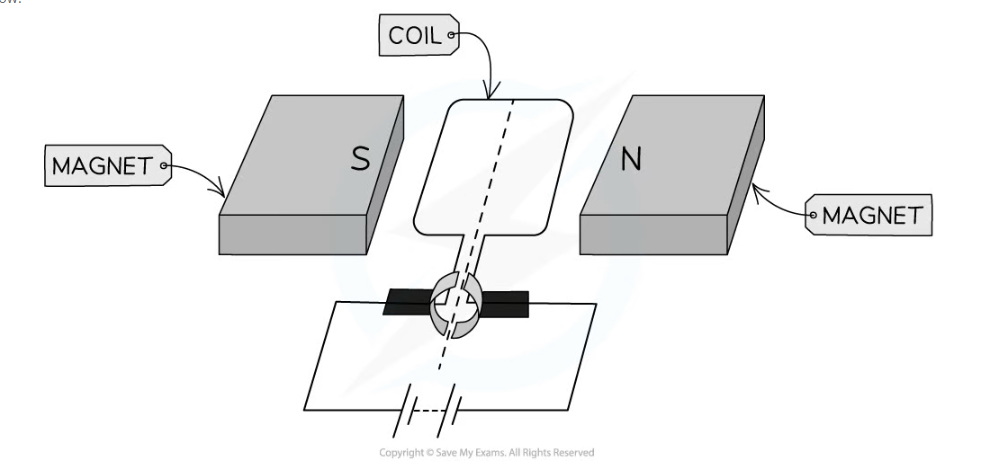
Determine whether the coil will be rotating clockwise or anticlockwise.
Step 1: Draw arrows to show the direction of the magnetic field lines
-
- These will go from the north pole of the magnet to the south pole of the magnet
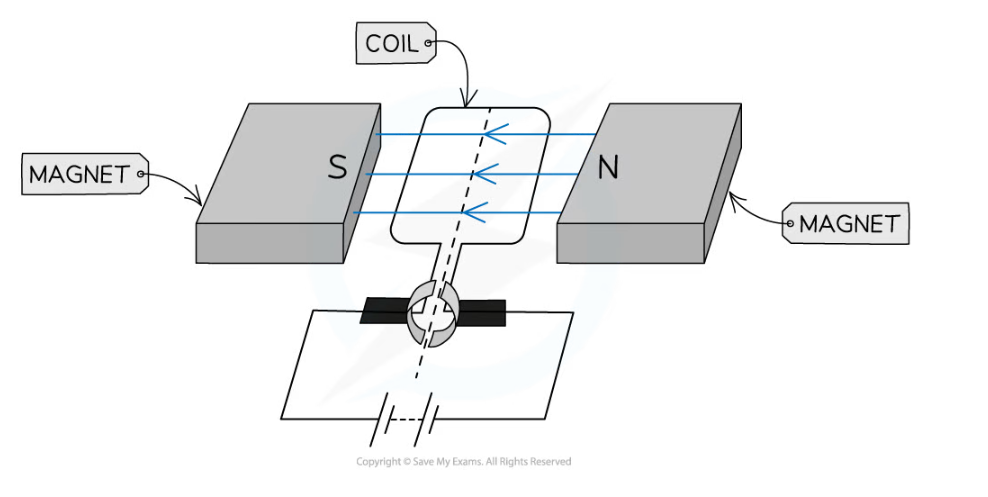
Step 2: Draw arrows to show the direction the current is flowing in the coils
-
- Current will flow from the positive terminal of the battery to the negative terminal
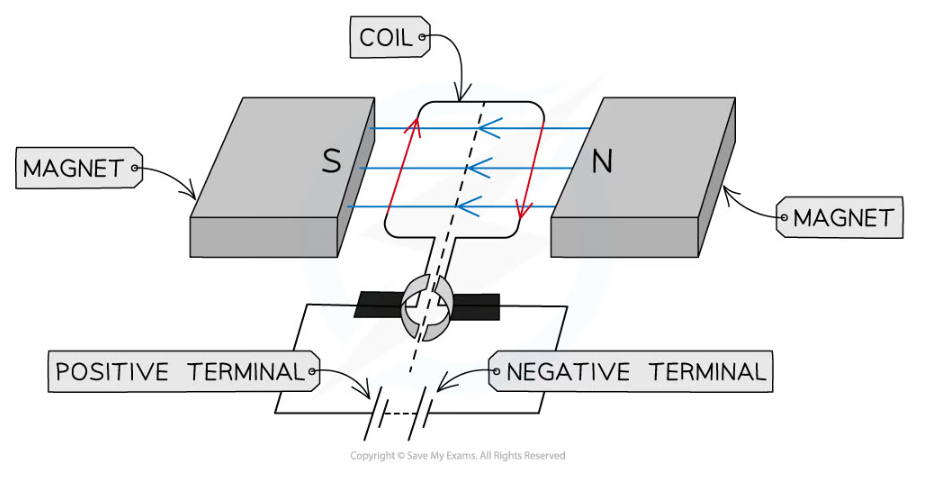
Step 3: Use Fleming’s left hand rule to determine the direction of the force on each side of the coil
-
- Start by pointing your First Finger in the direction of the (magnetic) Field
- Now rotate your hand around the first finger so that the seCond finger points in the direction of the Current
- The THumb will now be pointing in the direction of the THrust (the force)
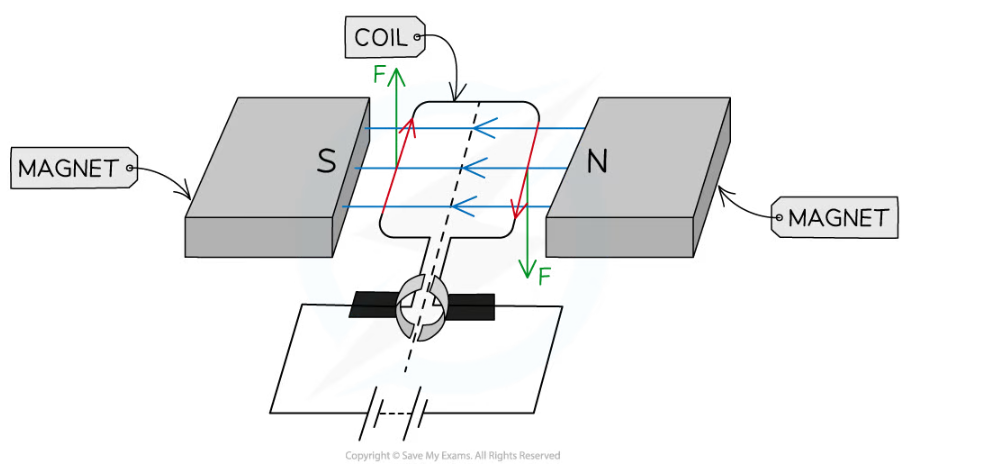
Step 4: Use the force arrows to determine the direction of rotation
-
- The coil will be turning clockwise
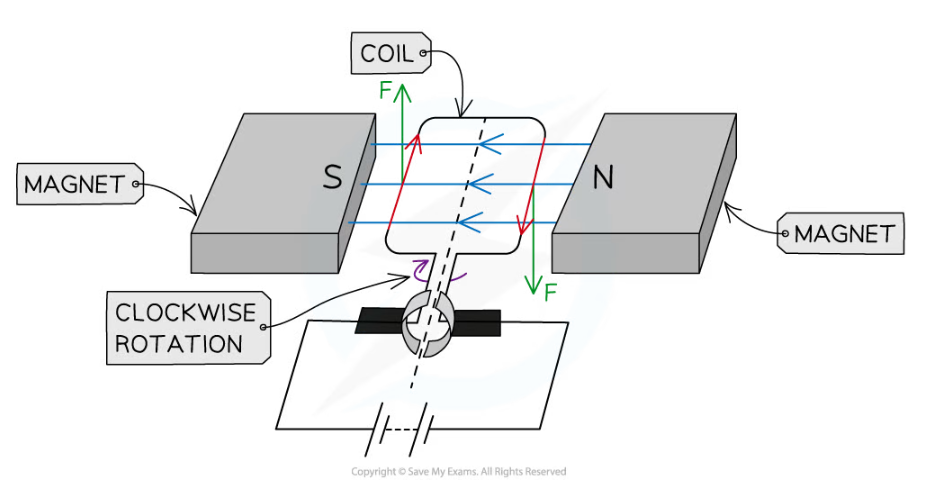
Exam Tip
The explanation of the loudspeaker is very similar to the explanation of a motor, however direct current is used in a d.c motor and alternating current is used in a loudspeaker. You need to learn how both work.When explaining how a loudspeaker works remember to refer to the alternating current and the changing magnetic field that it creates.
Factors Affecting Magnetic Force
- Magnetic forces are due to interactions between magnetic fields
- Stronger magnetic fields produce stronger forces and vice versa
- For a current carrying conductor, the size of the force exerted by the magnetic fields can be increased by:
- Increasing the amount of current flowing through the wire
- This will increase the magnetic field around the wire
- Using stronger magnets
- This will increase the magnetic field between the poles of the magnet
- Placing the wire at 90o to the direction of the magnetic field lines between the poles of the magnet
- This will result in the maximum interaction between the two magnetic fields
- Increasing the amount of current flowing through the wire
- Note: If the two magnetic fields are parallel there will be no interaction between the two magnetic fields and therefore no force produced










